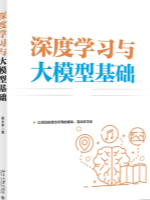74 | 深度迁移学习模型的微调:如何使用TensorFlow在TPU进行微调
在深度学习领域,迁移学习已成为提升模型性能、缩短训练时间的重要手段,尤其是在处理资源有限或标注数据稀缺的场景时。而TensorFlow,作为谷歌开源的广泛使用的深度学习框架,其强大的生态系统支持在多种硬件上高效运行,包括TPU(Tensor Processing Unit),这是一种专为机器学习设计的专用加速器。本章将详细介绍如何使用TensorFlow在TPU上对深度迁移学习模型进行微调,以应对自然语言处理(NLP)任务。
一、引言
迁移学习通过利用在大型数据集上预先训练好的模型(称为预训练模型)来解决或辅助解决目标任务,这些模型往往能捕捉到数据中的通用特征表示。微调(Fine-tuning)则是迁移学习中的一种常见策略,它涉及在预训练模型的基础上,使用目标任务的特定数据对模型进行进一步训练,以调整模型参数以更好地适应新任务。TPU以其高吞吐量和低延迟特性,特别适合用于大规模模型的训练和推理。
二、准备工作
2.1 环境配置
要在TPU上运行TensorFlow代码,首先需要确保你的计算环境能够访问到TPU资源。这通常意味着你需要在Google Cloud Platform(GCP)上设置项目,并配置适当的TPU虚拟机实例。安装TensorFlow 2.x版本,因为该版本原生支持TPU。
pip install tensorflow
2.2 导入库和工具
在代码中,你需要导入TensorFlow的相关模块以及用于处理TPU的特定工具,如tf.distribute.TPUStrategy。
import tensorflow as tffrom tensorflow.keras.applications import BertModelfrom tensorflow.keras.layers import Dense, Dropoutfrom tensorflow.keras.models import Modelfrom tensorflow.keras.optimizers import Adam# TPU配置resolver = tf.distribute.cluster_resolver.TPUClusterResolver(tpu='grpc://' + os.environ['COLAB_TPU_ADDR'])tf.config.experimental_connect_to_cluster(resolver)tf.tpu.experimental.initialize_tpu_system(resolver)strategy = tf.distribute.experimental.TPUStrategy(resolver)
三、选择预训练模型
对于NLP任务,BERT(Bidirectional Encoder Representations from Transformers)是广泛使用的预训练模型之一。TensorFlow提供了BertModel类,方便用户加载预训练的BERT模型。
# 加载预训练BERT模型bert_model = BertModel.from_pretrained('bert-base-uncased', input_tensor=tf.keras.Input(shape=(None,), dtype=tf.int32, name='input_ids'))
四、构建微调模型
基于预训练的BERT模型,你可以添加自定义层来构建适合特定NLP任务的微调模型。例如,对于分类任务,你可以在BERT的输出层后添加一个全连接层和softmax层。
with strategy.scope():# 取出BERT的最后一层输出last_hidden_states = bert_model.get_layer('pooler_output').output# 添加自定义层x = Dropout(0.1)(last_hidden_states)predictions = Dense(num_classes, activation='softmax')(x)# 构建模型model = Model(inputs=bert_model.input, outputs=predictions)# 编译模型model.compile(optimizer=Adam(learning_rate=1e-5),loss='sparse_categorical_crossentropy',metrics=['accuracy'])
五、数据准备
准备适合微调任务的数据集,包括训练集、验证集(可选)和测试集。数据应被预处理为BERT模型所需的格式,包括tokenization和padding。
# 示例:使用transformers库进行tokenizationfrom transformers import BertTokenizertokenizer = BertTokenizer.from_pretrained('bert-base-uncased')# 假设已有文本数据和标签texts = [...]labels = [...]# Tokenizationencodings = tokenizer(texts, truncation=True, padding=True)input_ids = tf.convert_to_tensor(encodings['input_ids'])labels = tf.convert_to_tensor(labels, dtype=tf.int32)# 划分数据集train_input_ids, val_input_ids, train_labels, val_labels = train_test_split(input_ids, labels, test_size=0.2, random_state=42)
六、模型训练
使用tf.distribute.Strategy的API在TPU上分布式地训练模型。
# 分布式训练history = model.fit(train_input_ids, train_labels, epochs=3, validation_data=(val_input_ids, val_labels), batch_size=32)
七、模型评估与部署
训练完成后,使用验证集或测试集评估模型性能。根据评估结果,可以对模型进行进一步调整或选择最佳模型进行部署。
# 评估模型test_loss, test_acc = model.evaluate(test_input_ids, test_labels)print(f'Test accuracy: {test_acc:.4f}')# 部署模型(略)# 这通常涉及将模型保存到文件或部署到生产环境中
八、优化与调试
- 超参数调优:调整学习率、批量大小、dropout率等超参数以优化模型性能。
- 混合精度训练:使用TensorFlow的混合精度API(如
tf.keras.mixed_precision.experimental.Policy)来减少内存消耗和提高训练速度。 - 模型监控与日志记录:使用TensorBoard等工具监控训练过程,记录关键指标和可视化结果。
九、结论
通过本章的学习,我们了解了如何使用TensorFlow在TPU上对深度迁移学习模型进行微调。这包括环境配置、模型选择、数据准备、模型构建、训练、评估及优化等关键步骤。TPU的高性能特性为大规模模型的训练和推理提供了强大的支持,使得迁移学习在NLP领域的应用更加广泛和高效。希望本章内容能为你在NLP项目中的模型微调工作提供有益的参考和指导。











